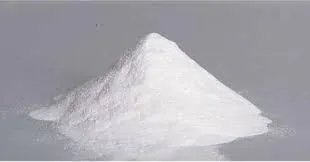
کانونی یەکەم . 29, 2024 04:34 Back to list
Understanding the Composition of HPMC and Its Key Ingredients
What is HPMC Made From?
Hydroxypropyl methylcellulose (HPMC) is a non-ionic cellulose ether that has garnered significant attention in various industries, particularly in pharmaceuticals, food, and construction. As a multifunctional excipient and thickening agent, its widespread applicability raises the question What is HPMC made from?
The primary source of HPMC is cellulose, which is a natural polymer derived from the cell walls of plants. Cellulose itself is composed of an extensive network of glucose units linked together, forming a rigid structure that provides support to plant cells. Cellulose can be obtained from various plant sources, including wood, cotton, and hemp, among others. The extraction and purification of cellulose from these sources typically involve mechanical and chemical processes, ensuring a high degree of purity.
Once cellulose is obtained, it undergoes a series of chemical modifications to produce HPMC. The process begins with the hydroxypropylation of cellulose, where propylene oxide is introduced to the hydroxyl groups present in the cellulose structure. This reaction creates hydroxypropyl groups that enhance the solubility and chemical stability of the polymer in water and organic solvents, thereby allowing for its extensive use in various applications.
In conjunction with hydroxypropylation, methylation is also carried out. Methylation involves the introduction of methyl groups into the cellulose molecule, performed via reaction with methyl chloride or another methylating reagent. This modification is crucial as it confers unique functional properties to HPMC, such as its thickening, emulsifying, and film-forming abilities.
what is hpmc made from

The ratio of hydroxypropyl to methyl groups can vary, which alters the properties of HPMC, leading to different grades of the polymer. These variations allow manufacturers to tailor HPMC for specific applications, ranging from highly viscous formulations to those that act as a binder or stabilizer.
The high degree of purity and lack of allergenic properties make HPMC particularly appealing in the pharmaceutical industry. It serves as an excipient in tablet formulations, helping to achieve desired viscosity, taste masking, and controlled release profiles of active ingredients. Additionally, in food production, HPMC is used as a thickener and stabilizer in various culinary applications, including sauces, dressings, and ice creams. The ability of HPMC to form gels and retain moisture makes it an ideal additive for enhancing texture and mouthfeel in food products.
In the construction sector, HPMC is utilized as a key component in dry-mix mortars, enhancing workability and adhesion. It also helps to improve the retention of water, which is crucial for the curing of cement-based materials. Furthermore, the presence of HPMC in these mixtures contributes to the overall durability and performance of the final product.
Despite its many applications, the production of HPMC is a carefully controlled process that requires adherence to stringent quality standards to ensure consistency and safety. The resulting HPMC products are synthetically produced, yet they maintain an environmentally friendly profile, as they are made from renewable plant materials and do not possess harmful additives.
In conclusion, HPMC is derived from natural cellulose obtained from various plant sources and is modified through hydroxypropylation and methylation to achieve its multifunctional properties. This polymer's unique characteristics make it indispensable in a diverse range of industries, from pharmaceuticals and food to construction. As demand continues to grow for sustainable and efficient materials, HPMC stands out as a versatile option that combines natural origins with innovative applications.
-
Unlocking the Benefits of HPMC Products: A Gateway to Versatile Applications
NewsAug.07,2025
-
Unleashing the Potential of HPMC Ashland: A Comprehensive Look
NewsAug.07,2025
-
Tile Bonding Cellulose: The Key to Superior Adhesion and Durability
NewsAug.07,2025
-
Hydroxypropyl Methylcellulose Powder: The Versatile Component in Modern Pharmaceuticals
NewsAug.07,2025
-
Hydroxyethyl Cellulose: The Versatile Solution for Various Industries
NewsAug.07,2025
-
Hydroxyethyl Cellulose (HEC): The Versatile Polymer for Various Applications
NewsAug.07,2025







